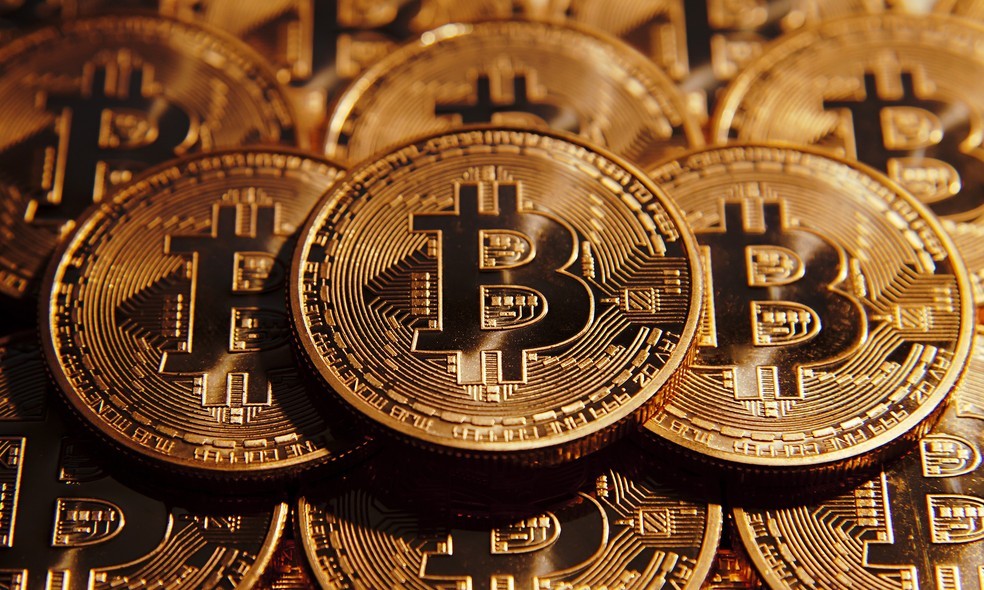Cryptocurrencies gained popularity with the price increase of the most famous of them, Bitcoin. Since then, digital currencies have been traded on a large scale at brokers worldwide, even without the management of a central entity.
Despite this, there are few who really know the cryptographic currencies business, and the involvement of this asset in scams on the Internet ends up generating doubts among lay people. Check out seven facts that will help you to demystify the concept of cryptocurrencies and understand a little more about this technology.
Who is mining: search engine elects sites that mine bitcoin

See seven things you didn't know about bitcoin and other crypto currencies Photo: Divulgao / Bitoin
1. There are thousands of currencies in addition to Bitcoin
Bitcoin (known by the acronym BTC) is far from the only cryptocurrency. Although it was the first, there are now more than 1,600 similar digital currencies listed in the Coin Market Cap. They are called altcoins. The largest number when considering the new coins that did not reach enough volume to be accounted for by the portal, as in the case of the Brazilian Blood Donation Coin, Niobio Cash and ZCore.
The higher value and the greater volume of transactions make Bitcoin the main currency in the market, serving as a reference for cryptos as well as the dollar for the traditional financial system. Online brokers typically use Bitcoin as a basis for calculating the price of other selling currencies. This means that increases and decreases in the price of BTC impact the value of all altcoins.
2. Nobody knows who created Bitcoin
The article containing the instructions for creating Bitcoin appeared on an email list in October 2008. The document described a mathematical system that would be able to secure online transactions between two users without the need for an intermediary institution.
It was signed by the pseudonym Satoshi Nakamoto, whose true identity remains unknown. It is not known at least whether the name was used by just one person or by a group of enthusiasts. The only certainty is that the idea of cryptocurrency has its origins in the libertarian concept and cyberpunk culture.
In honor of the creator, the smallest subunit of Bitcoin is called Satoshi: 1 Satoshi equivalent to 0.00000001 bitcoin.
3. Altcoins evolve the Bitcoin code
Bitcoin is the most valued cryptocurrency on the market, but certainly not the one with the most advantages. Since its inception, other developers have created currencies on the same bases, but with other features. Currencies such as Dash, for example, introduced Masternodes, which are responsible for speeding the approval of transfers and making transactions anonymous. There are also currencies that do not charge fees for the operation of the network and others, such as the Brazilian ZCore, that work within Telegram.

Telegram accepts payment in cryptocurrencies within the application Photo: Marvin Costa / dnetc
4. Cryptocurrencies are a kind of reward
Cryptocurrencies are based on blockchain, a network verification system that checks the validity of transactions. This check requires complex mathematical calculations performed by powerful and often specialized computers. When carrying out the task, the machines receive coins as a reward for their work. The number of coins divided according to the processing power of computers, in an amount that varies from currency to currency. This activity is called mining.
The Bitcoin network emerged in 2009, when Nakamoto performed the initial validation calculations and received the first 50 coins as a reward. Since then, however, the reward has decreased as provided in the code. At the peak price of the currency, the coins received by Nakamoto were worth US $ 895 thousand.
5. Hackers may have already used your PC to mine
Mining bitcoin and other currencies requires high processing power and, therefore, also a salty investment. To circumvent spending, criminals use a series of cyber scams and attacks to control user computers and integrate them into a network to help mine. Home computers are not able to mine bitcoins on their own, but they can be useful for hackers on a controlled network.
There are malware created specifically to steal processing and target cryptocurrency mining. Some have already been found in the form of an extension for Google Chrome. Others appeared on websites, infecting visitors' computers.

Cryptocurrency mining can be done illegally via malware Photo: Pond5
6. Monero the darling of cybercrime
Monero is the currency most used by mining malware. According to a survey by the Bleeping Computer portal, 84% of what is mined in virtual scams is Monero, equivalent to 5% of the total stock. The scenario is due to greater flexibility of the mining groups (called pools) of the currency, which accept computation originating from a computer network with hijacked processing.
Monero's intrinsic anonymity also makes it widely used in attacks on ramsonware, malware that hijacks computer files and calls for ransom. The coin has an integrated laundering system that makes it even more difficult to discover the destination of transfers on the network, which pleases criminals who want to hide traces of scams online.
7. Miners mainly use video cards
Video card makers, like Nvidia and AMD, have seen their market change completely with the arrival of cryptocurrency miners. Several altcoins allow mining only by video cards, considerably increasing the demand for graphics chips. In an interview with TechCrunch in March 2018, Nvidia's CEO, Jen-Hsun Huang, said the company "is far from meeting demand", referring mainly to mining activity.
